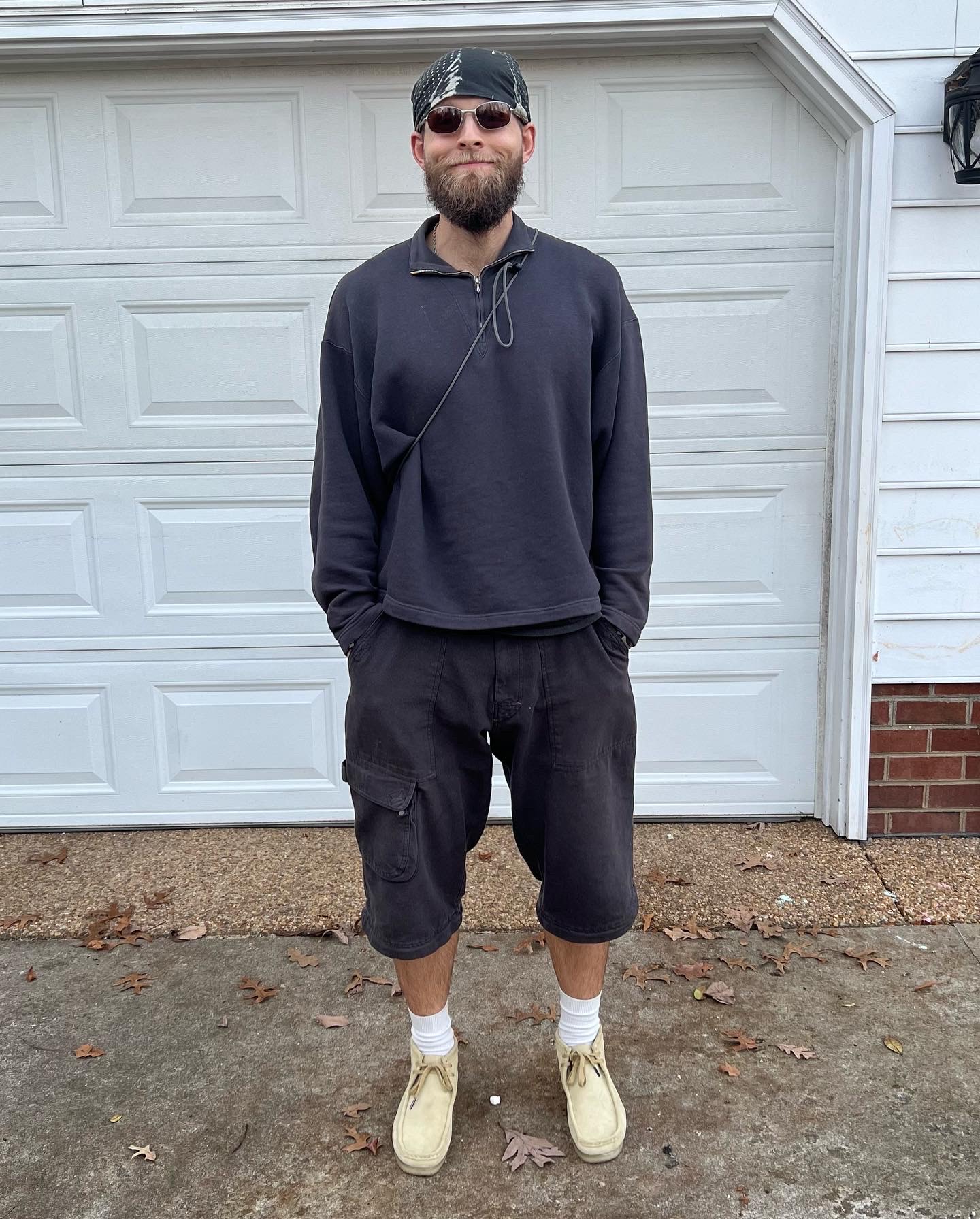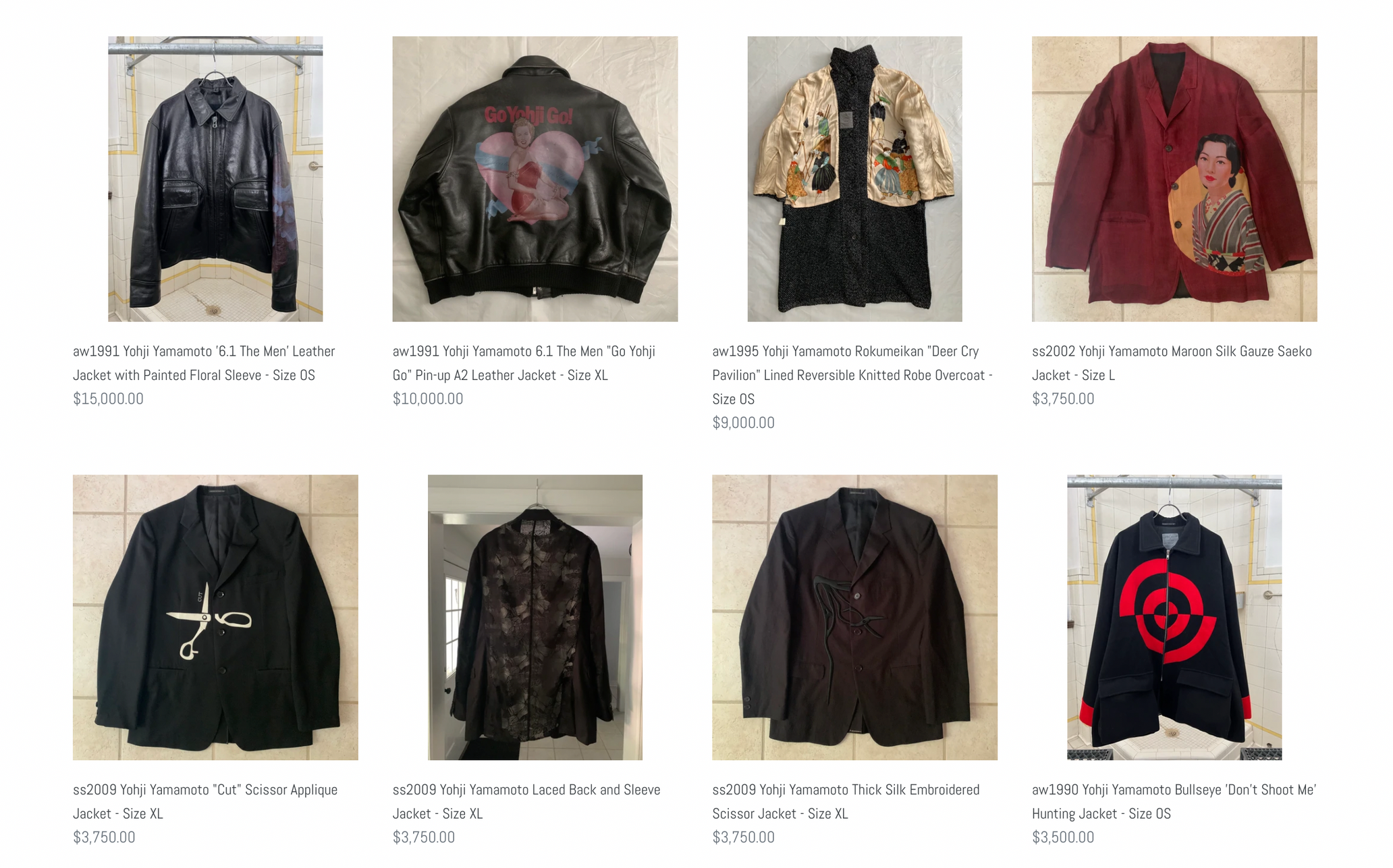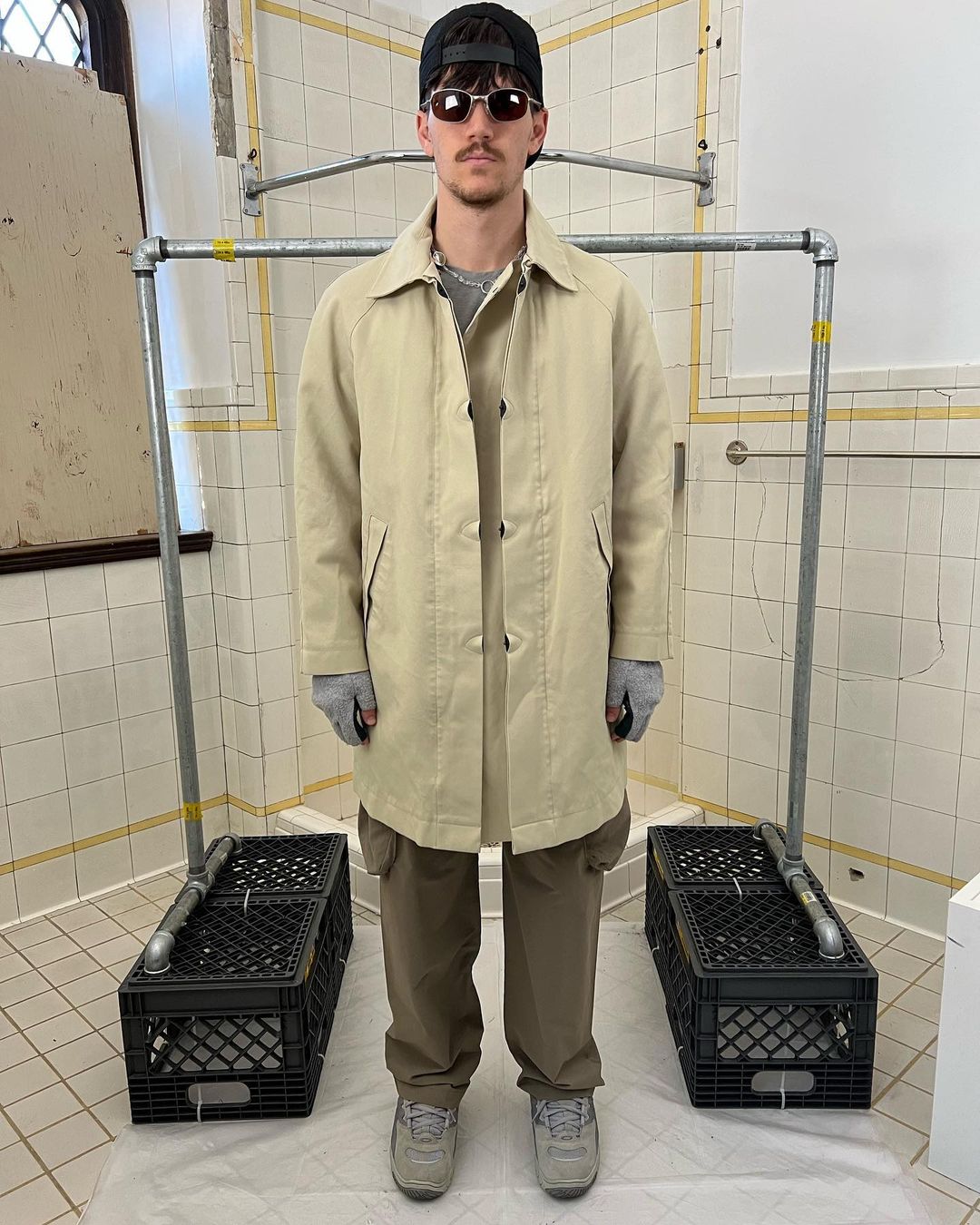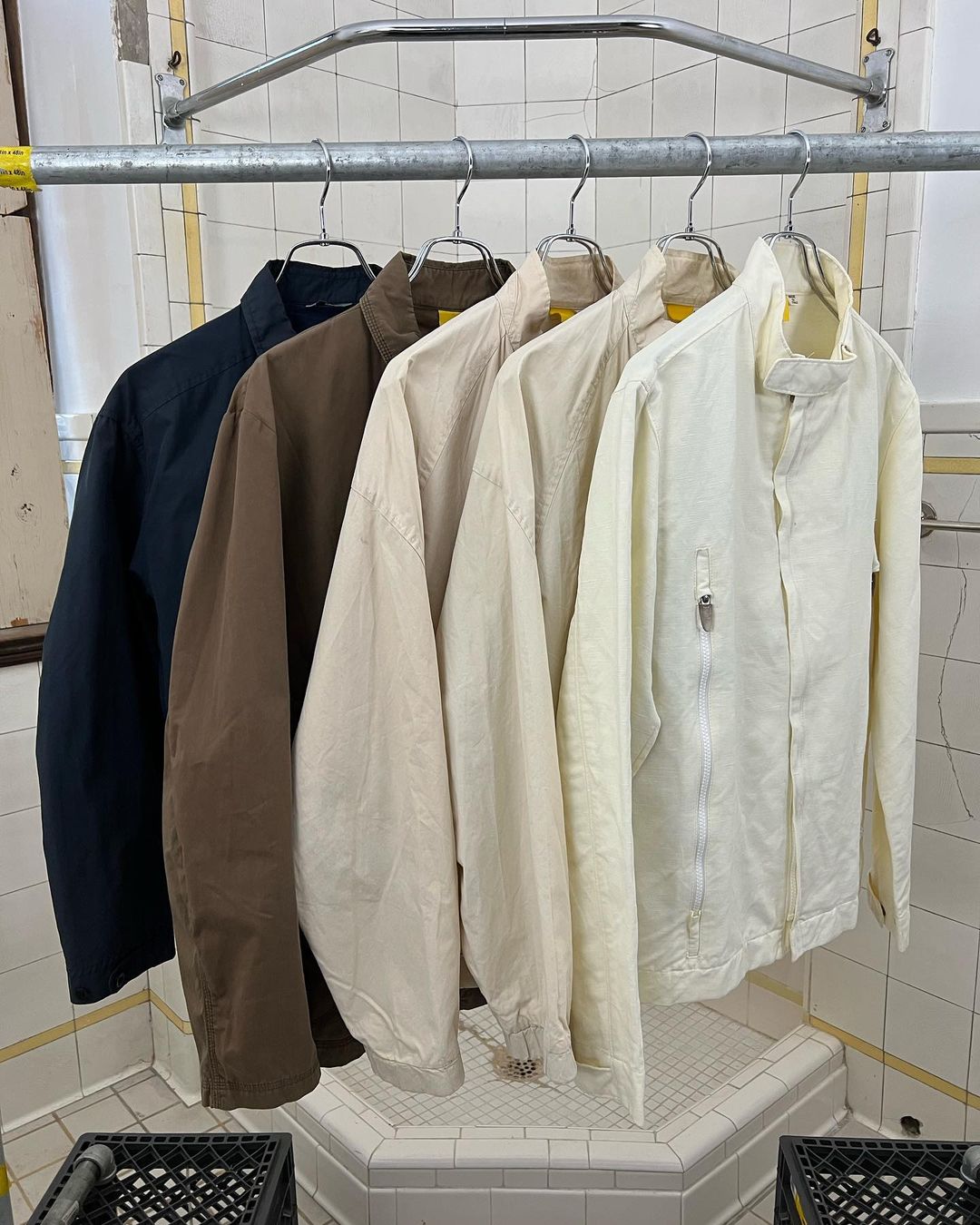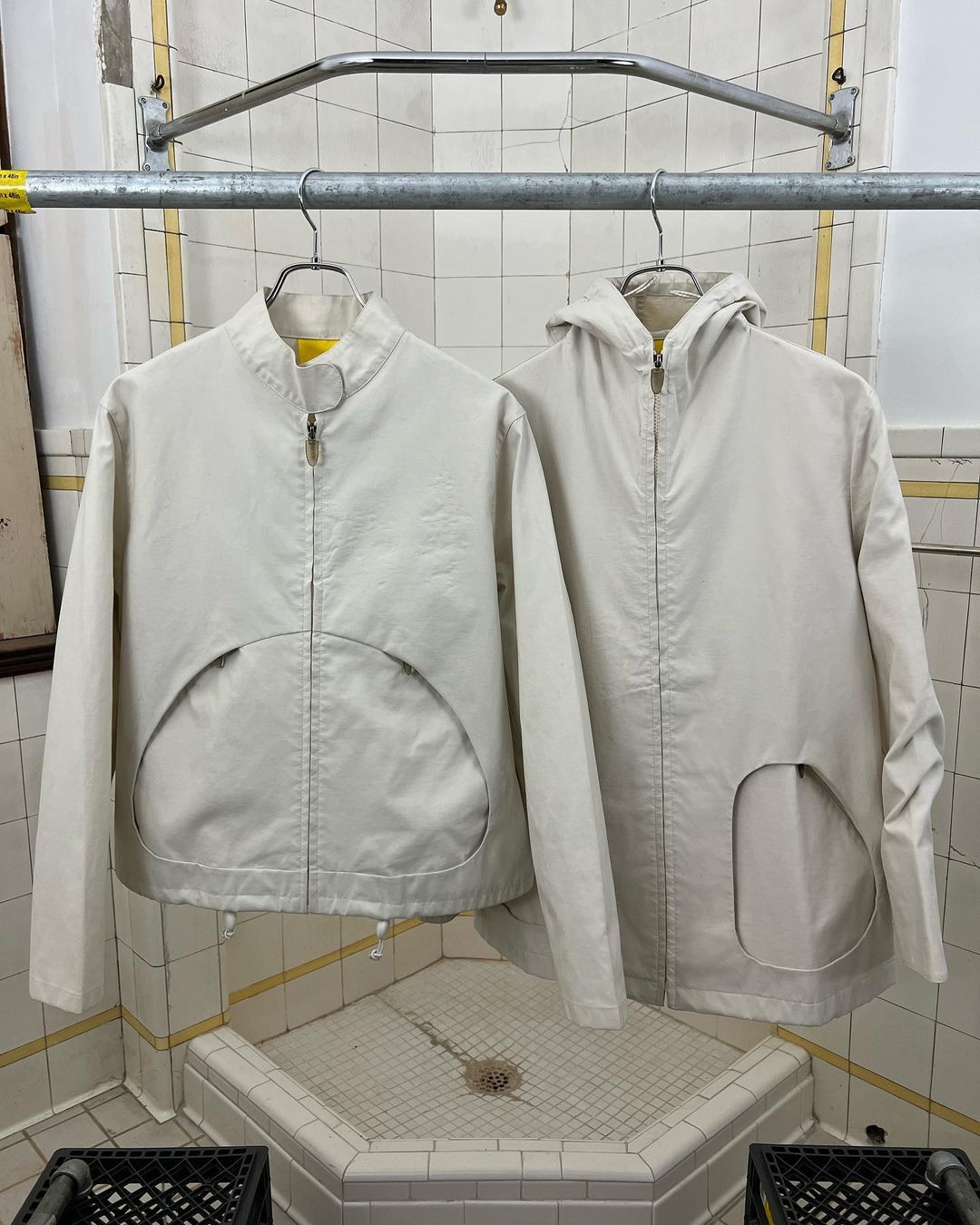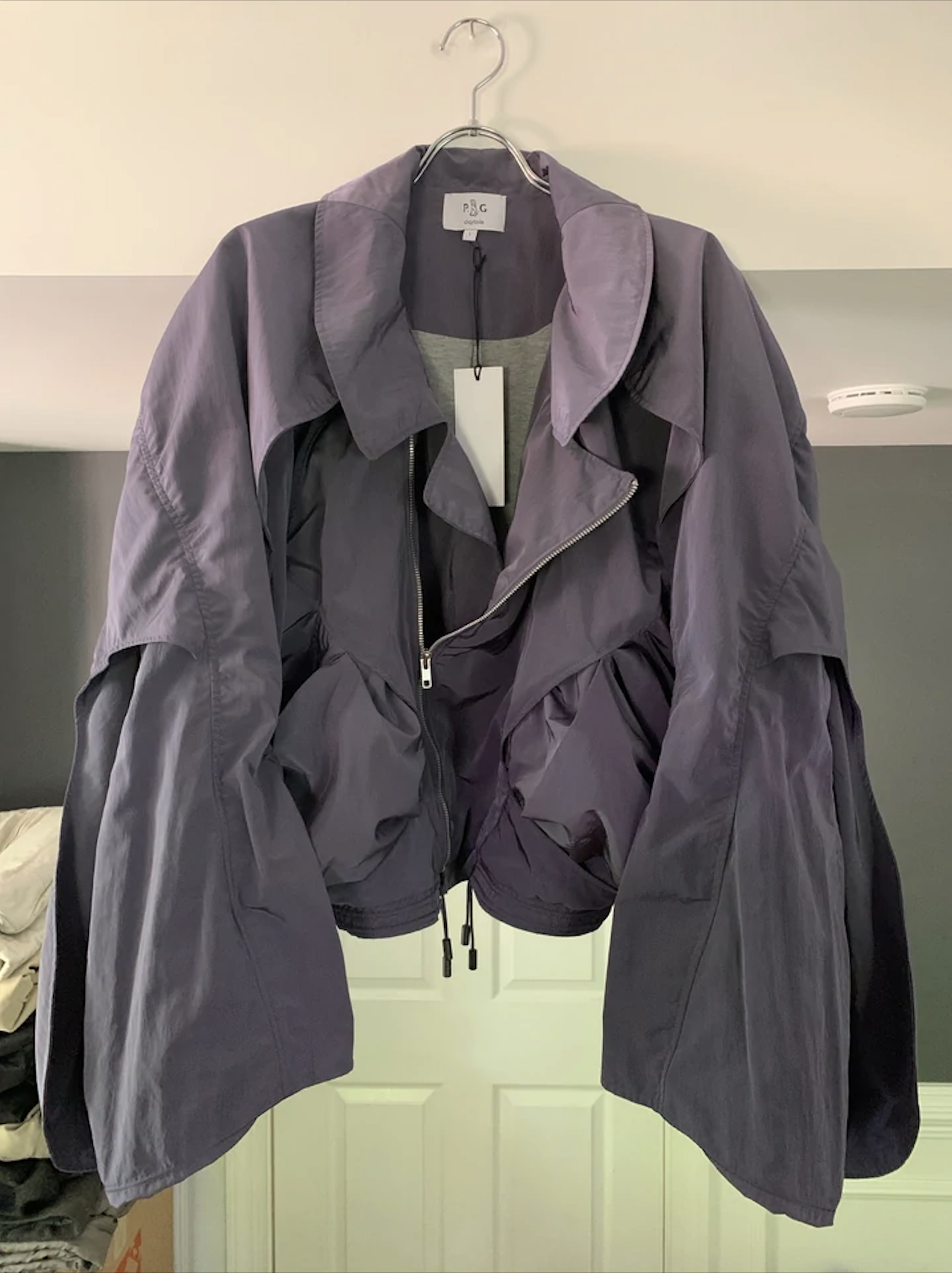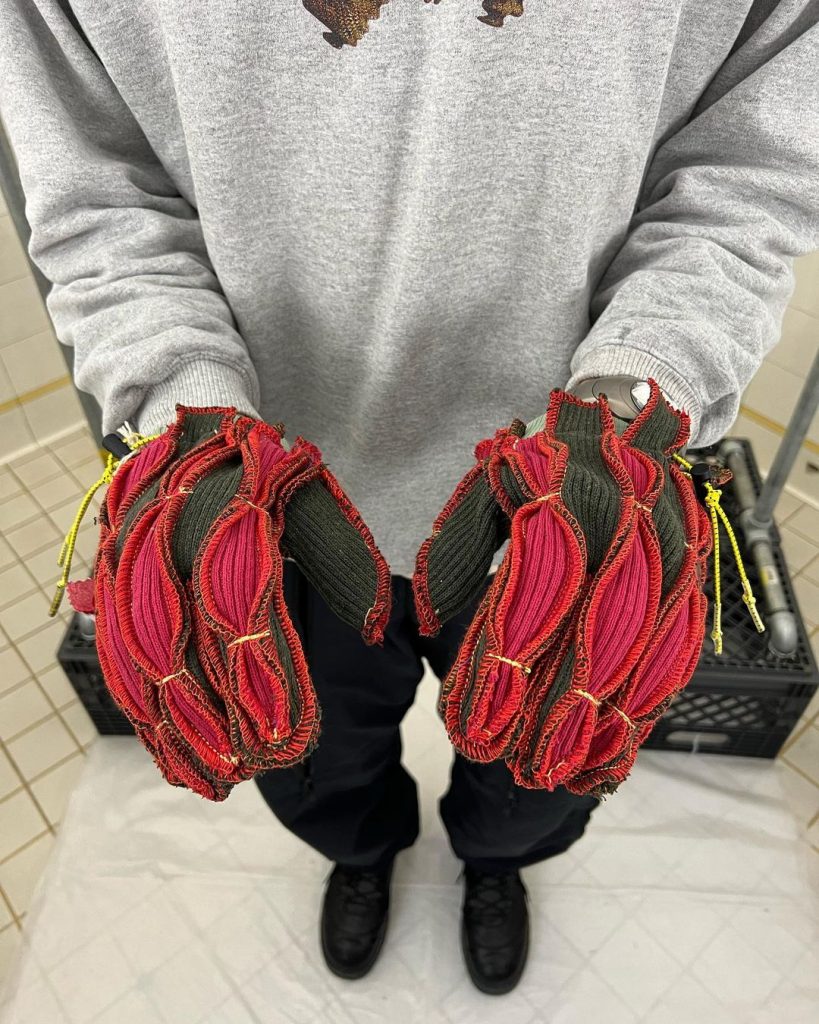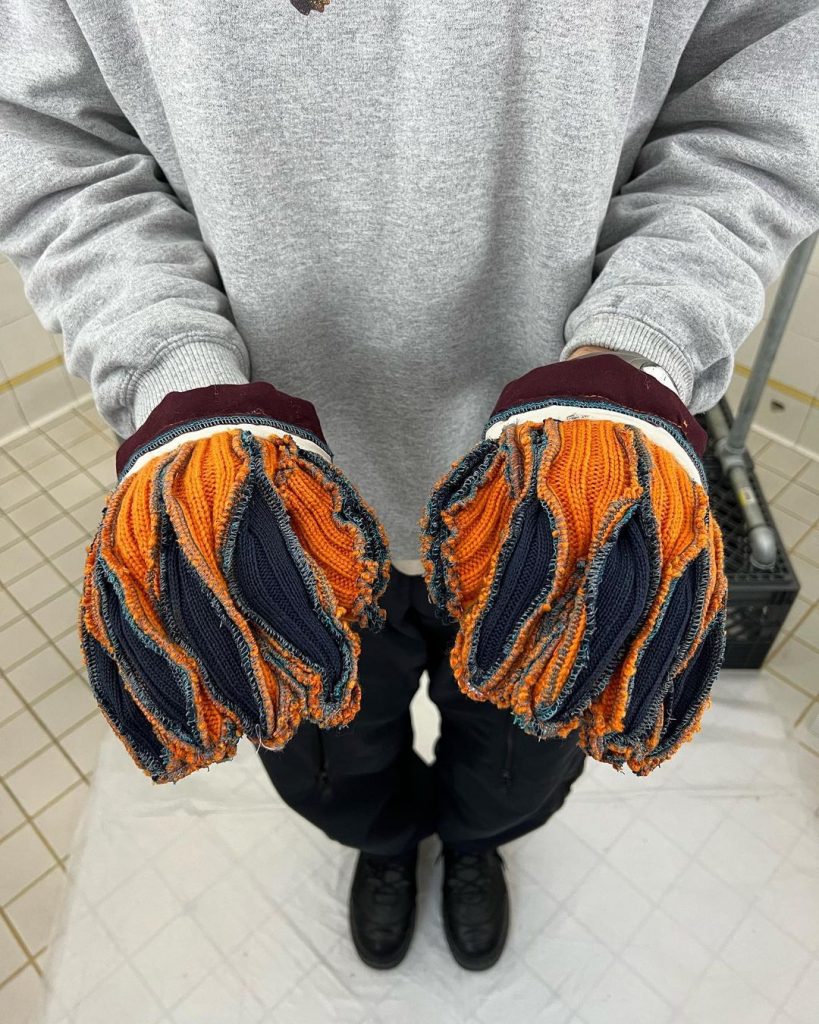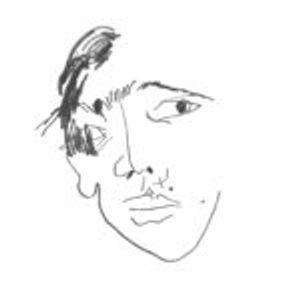There is a surprising amount of the past in young peoples’ visions of the future right now. The highest-grossing film for 2021 in the U.S. was another Spider-Man; in Japan, Evangelion. Yet these products are experienced as completely fresh to new consumers. In fashion, old is new again: following a sort of 20-year rule, styles from the 90s and early 2000s have resurfaced for Gen Z as inspiration for how to dress. Naturally, brands have caught on; new iterations of flared pants and chunky shoes occupy significant real estate here in New York this winter. Perhaps more notable, however, is the fact that original old items have attained a mainstream desirability. On his latest album, Kanye West did not rap about a new Dior jacket, but instead a rare and old Junya Watanabe-designed watch that nobody has ever seen.
Through the instagram account Constant Practice, Zeke Hemme has built a following of detail-obsessed fashion fans (and celebrity influencers) some 120,000 strong as of this article’s writing. On the account, Zeke models a lot of the clothing he sells, bringing a sense of humor to avant-garde fashions and connoisseurship to vintage outdoor gear. To get a closer view of his world and the products that occupy it, I asked Zeke some questions about his life, his store, and his perspective on fashion.
Finding a space for clothing and competition
−−Your store is based now in Richmond, Virginia— before that, it was Philadelphia, right?
Zeke Hemme: Yeah, it was Philly, and then before that it was Hoboken, New Jersey. We moved down to Philly because we were gonna have my first daughter, and it was just cheaper down there…I mean, the New York area, I’m sure you know how expensive it is. And then from Philly we moved down to Richmond because more family was down in the Richmond area. We’ve been here almost a year now, and we’re very happy with it. I have an office space in downtown Richmond now…it took probably about 6-7 months to actually find the space. I moved there in September, and I’ve been there ever since. I’ll be there probably for a decent amount of time, at least until I outgrow it. Just since I have so many clothes…the square footage, it’s only like 500 square feet, it’s not that big. If I want everything hung up, it’ll be too small by the end of it. But for the time being, I’ll work around it.
−−You said you were originally working out of Hoboken? Is that where you’re from?
Hemme: No, so I actually lived in Louisville, Kentucky, for most of my childhood, and then I moved out there for college. I was kind of always into clothes, but after I graduated is when I started to heavily get into it, just since I had more free time. I played soccer full time, basically, until college was over. I like to be very competitive about what I’m doing, and I have to actually enjoy what I’m doing to be competitive about it. And business is all competition, or at least it started out that way [for me], because there were a couple of stores…you could say they were “archive” stores, when it all was starting, in like 2016. I was always very competitive about it, even now I try to be very competitive about it, just to be the store that everyone wants to go to, with the most interesting, unique products that they’re not finding anywhere else.
−−I read that the first items you sold were from Undercover— what attracted you to the brand?
Hemme: That was what happens to any new seller in my opinion; you just naturally do what other people are doing. So Undercover was really popular back then. I mean it’s still really popular now, but in terms of the second-hand market, people trying to push the “archive” thing, that was one of the main brands. It was Undercover, Raf [Simons], and Helmut [Lang], those were the big three around 2015-2016. They’re kind of the fathers of…starting the whole archive thing. For Undercover, the pieces were very interesting, and a little more out-there than what I personally was used to. The downside was that I personally couldn’t wear any of it. I’m 6’3 and about 190 pounds, so…none of the clothes really fit me that well. And I’m broad, and I have an athletic build, so it just wasn’t working out. I slowly started to realize that it’s cool having the pieces, but I actually enjoy clothing myself, and if I have a piece I really like but I can’t wear it because it’s too small, that sucks. So I started to try to identify with other brands, like Cav [Empt] and Yohji [Yamamoto] and Issey [Miyake] and Comme [des Garçons], ‘cause a lot of the cuts on those pieces are relatively large. Especially Yohji, Yohji’s cuts are frickin’ massive. So it was really easy for me to put them on and have more of an attachment.
I was selling Undercover, then I slowly moved onto Cav Empt, and then after that I did a Cav Empt drop on Grailed in 2016. Then I stopped for about six months, ‘cause I was trying to figure out what to do. I almost stopped selling at that point. [laughs] It’s really funny, I don’t know why I stopped, I guess I was overthinking it and trying to think of something cool and new to do when I should’ve really just continued what I was doing. But when I started back up again, after six months or whatever it was, I started to buy and sell Yohji, Comme, and Issey specifically. At that time, the markets were really focusing on Raf, Helmut, Undercover…and with any market, you’ll get to a point where it caps, and I felt like those were getting to that point. So it was both a personal decision and a business decision. Personally, I really really like Comme, Yohji, and Issey…that’s why I collect a lot of them. I have my own collection and stuff I sell. And then I sell my personal stuff at some point. But I feel like the more you have a personal attachment to the stuff, the more you find better products…the very specific, unique, or hard to find ones.
For Comme, the price point was easier to get into, and same thing for Issey, nobody was really buying or selling it. But Yohji already had a market. Yohji’s been on the second-hand market for a long time, so the price point was relatively high. That was risky from a business standpoint, because I was spending a lot of money on hype. An Undercover jacket would sell for 450, 500, a Yohji jacket would start at that price. So then I was taking even more risk, just to invest in it. But the plus side is that the shit actually fit me, so even if I bought it for 500 and it wasn’t selling, I could just wear it.
Collecting and selling rare labels
−−At some point in that early period, or maybe when you took a break, did you feel a sense of purpose beyond selling or wearing the clothes you were buying?
Hemme: To tell people about the history and stuff?
−−Yeah.
Hemme: I did, and I’d love to do it more, and my excuse always is that I just don’t have time. I guess a more current example is the Mandarina Duck stuff. I have other brands that I’ve been collecting, so…maybe for future brands I’ll try to do it in a more packaged way, with more information built into it. With the Mandarina Duck there just isn’t that much information out there, so my goal was to try to consolidate as much as possible to get a whole picture of what products the brand offers. Through the [consolidated] products you can actually understand more of the brand, because everything’s in one place. It’s not like you’re seeing one piece here and one piece there, and you’re like, “I kind of get it.” You’re actually seeing a hundred pieces of that one brand, while there aren’t really any [other] images of the brand on the internet.
I also think that it’s partially my job to tell people what I think is a quality vintage brand. Because Mandarina Duck, it’s a completely unheard-of brand, but the quality is phenomenal. It’s some of the best-made clothes. But like I was telling a customer yesterday, you’re paying for different things with different brands. With Mandarina Duck, you’re paying for the quality, the fabrics, the textures, all the interesting patterns they did on the garments. All the garments are very typical, for the most part, but all the pattern cutting they did is completely atypical. But you would never think it if you just looked at the garment itself on an instagram post. It doesn’t translate. You would have to be there in-person to feel the fabrics, I’d have to show you the cuts and the paneling…it’s in the very, very small details that they do. But that comes with the territory of a lot of tech-type stuff. It isn’t overt, if that makes sense.
−−It seems that the Constant Practice aesthetic has a particular focus on product design— a love of functional and non-functional details that make items special.
Hemme: Is that your interpretation of it? Honestly, I just kind of do what I want to do at the end of the day, but my goal is always what you just said. It’s like finding those utilitarian, functional pieces that you can wear every day, but that also have these weird little details you would never think of. You pretty much nailed it on the head, and kudos to you, because I don’t ever really verbalize what I’m trying to do.
−−And with what you’re trying to do— does that interest ever extend beyond clothes?
Hemme: Design, in general? Yes, but the majority is in clothes. Especially because I have clothes, you know, my job, it’s the clothing thing. I have other interests, like furniture, but I don’t dive into it. I spend so much time finding clothes from brands I already have, or finding new brands that fit within the world that I’m doing. And so continuing with that, and finding new brands, like the Seeing Red guys, or Brian Jimenez, or Per [Gotesson], and trying to find another up-and-coming designer that’ll fit into the store…it’s very time consuming, I probably spend eight to twelve hours a day doing it.
“Complete” products for the future
−−When you sell new items from brands like Seeing Red or Per Gotesson, you’re selling them alongside older brands you’ve done research on. Do you evaluate the new pieces considering qualities that might make the items desirable in the future?
Hemme: Yeah, well for all the brands I sell there’s a very specific aesthetic, and they’re true to the aesthetic that they’re going for. That’s one of the hardest things for designers— to find what their aesthetic is, and then build product based on that. Brian Jimenez kind of reminds me of Rick [Owens]. It’s a more military, industrial take on Rick-ish…feelings. [laughs] He uses really good colors, I really like the silhouettes he goes for. And he always has a military bent in what he’s researching and trying to reference, which is something that I personally connect to— a lot of what I sell is military-influenced. Seeing Red, they have this very interesting, unique, grotesque design. They have their core ten or so products that they do, but the language, from the colors to the materials, it’s very very consistent, and that’s really hard to do, the way they’re doing it. Mixing five different colors into one piece— usually I’d think that’s the dumbest thing in the world, but for whatever reason it looks good on their stuff. It’s because they understand colors. You gotta think about if the body of the hoodie is this color, and we’re using this kind of contrast stitching detail, but then we’re gonna have these other little green threads sewn in, how is everything working together? It screams loud but then at the same time it doesn’t, just because it’s all cohesive and feels like it’s all supposed to be there. Like the gloves they did, those are the coolest things I have ever seen. Whenever I get a product in and I’m very, very happy with it— and this isn’t just for new designers— where I think holy crap, this is really well made, every design feature on it is really well-thought out, then it’s a complete product. That’s how I feel about the gloves. And that’s no bullshit. [laughs] It’s one of the most complete products I’ve gotten from a new designer. And the other one would be Per’s Digitoile jackets from 2019 and 2020…those, I feel, are very complete.
−−You, yourself, grew up in the 90s, right? How do you relate to this new “Y2K” nostalgia and the trend that’s emerged from it?
Hemme: Well, I’m 30— so ‘91 to 2001, I was ten. I mean, Oakley is really cool, I have a lot of Oakley. [shows “timebomb” watch] And this is Oakley too!
I kind of pay attention to trends, and kind of don’t— so you’ll see some items that “fit the bill,” and some items that don’t. Being a store that curates, it’s important to have both— you don’t want to follow trends verbatim, because then you don’t have any perspective. But you can’t go the other way either, because then you’re going to cap yourself from a business standpoint. If you go full avant-garde, off the beaten path, you’ll have a strong customer base, but you’ll only have so many new people that come into it. If you straddle the two, I think that’s the happy medium— you’re bringing in new people that might not think about the weird, avant garde stuff that isn’t very popular, but you get them in the door with a trendier item or the item people are gonna know about. Eventually, maybe later on, as the customer’s style develops, they may come back and realize that they like this other stuff too.
−−To conclude— as of this interview, you’ve just released a big collection of Mandarina Duck items. Any idea what’s next for 2022?
Hemme: I have some other brands in the pipeline that I’ve been collecting for the past year and a half…I’ll probably be releasing some of those. I don’t want to give too many details away, I like to keep it a little discreet. Hopefully with these next vintage brands I’ll be selling, I’ll have a more packaged, scheduled rollout, with more information on the items. I haven’t had to actually do this before, so it’s a little new to me. I was working another job for the last six or seven years, and this was just a side thing. All I would do was take photos of clothes and post them, just ‘cause that’s all I ever had time for. But I’m doing it full time now, so I can actually think about what I’m doing, schedule stuff, make it planned out a little bit more. But I also like how it’s not that planned out sometimes, when it’s a bit sporadic. [laughs] Because I think that way it’s a bit more engaging.
Zeke Hemme
He is the owner of Constant Practice, a Richmond-based store for vintage, technical, avant-garde, or otherwise “archival” fashion items. He has been collecting and selling clothes for the past six years through his website and instagram page, as well as Grailed, an online platform focused on the buying and selling of second hand men’s clothing.
https://Constant Practice.com/
Instagram:@constant_practice

